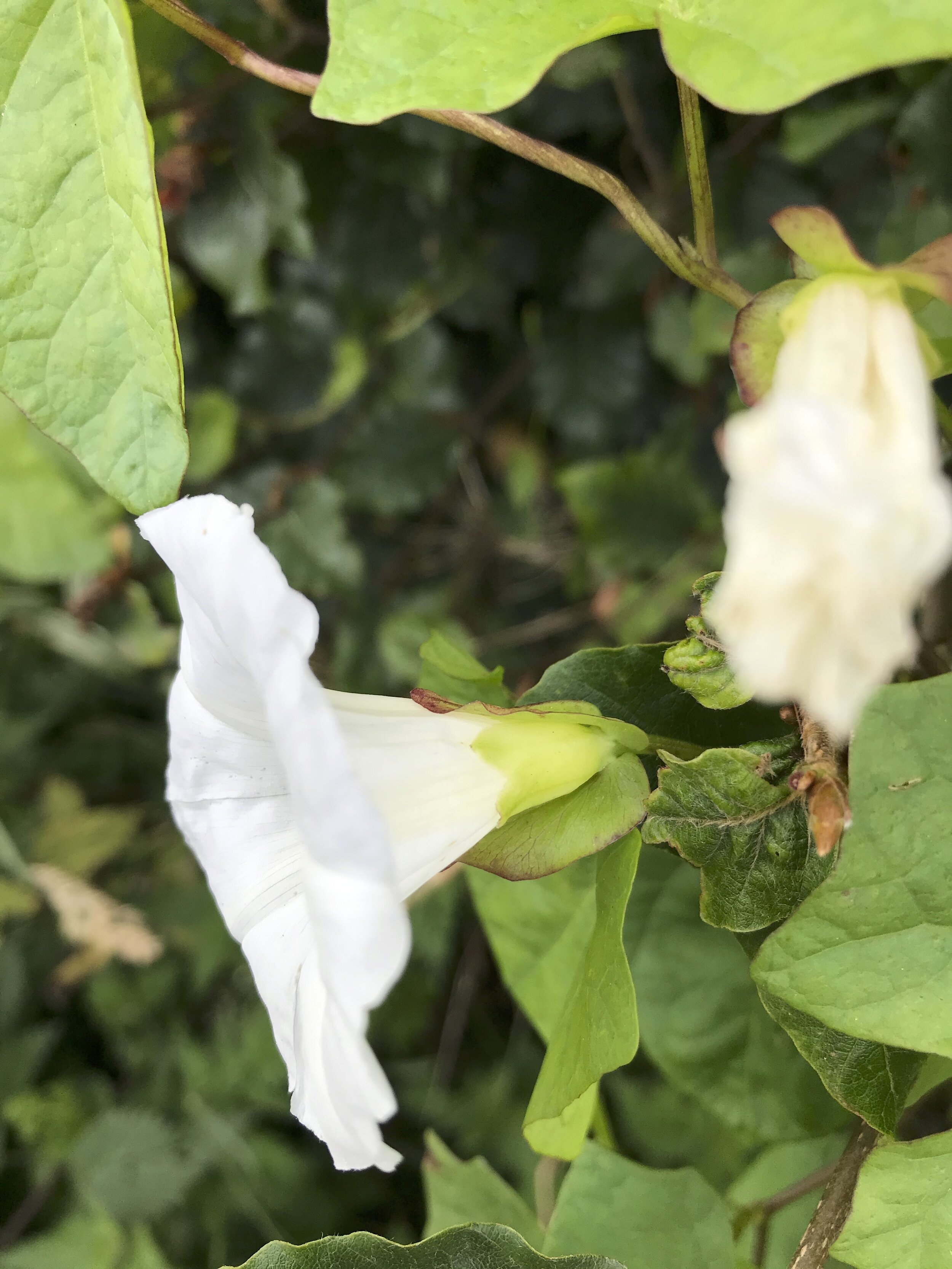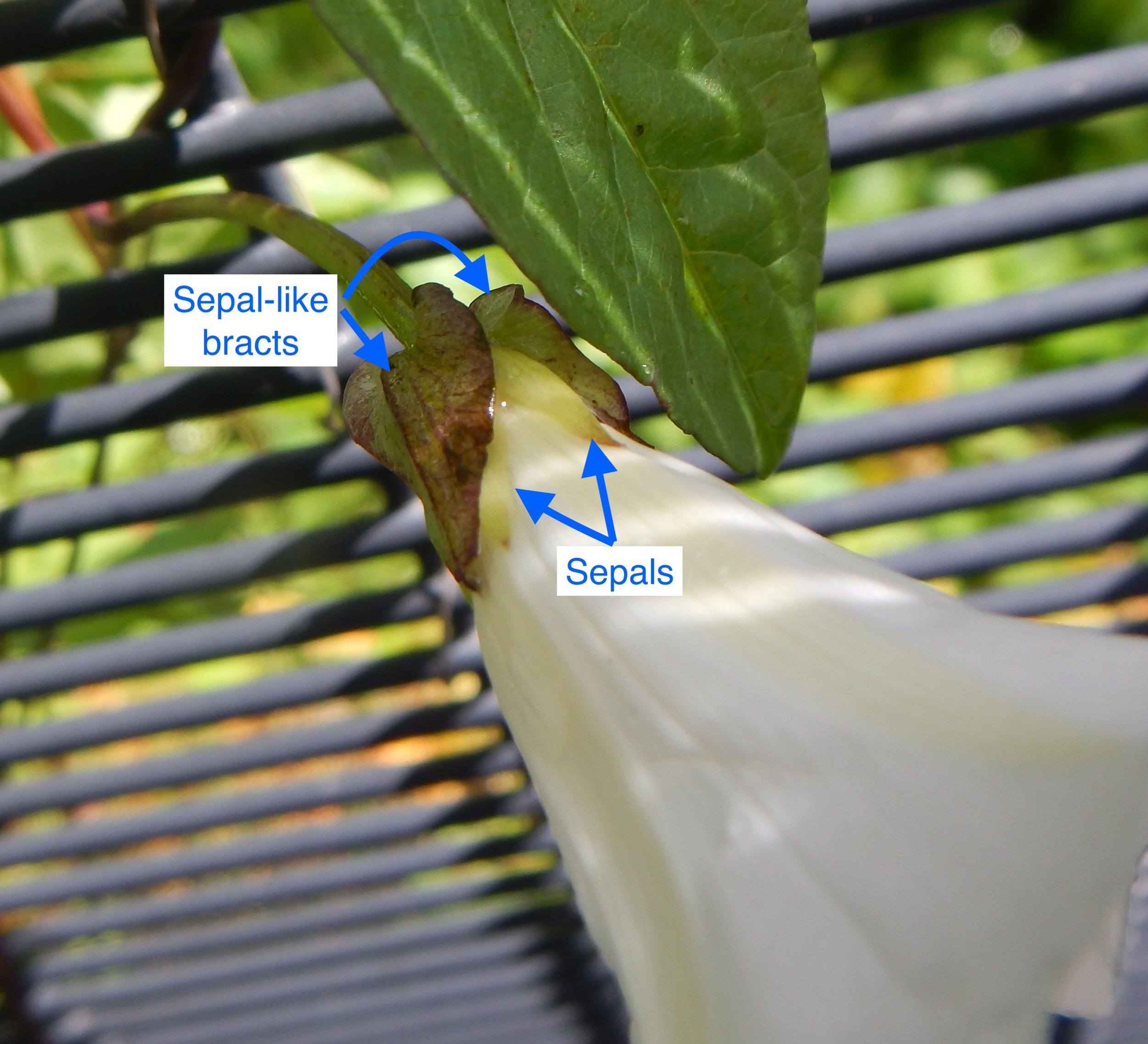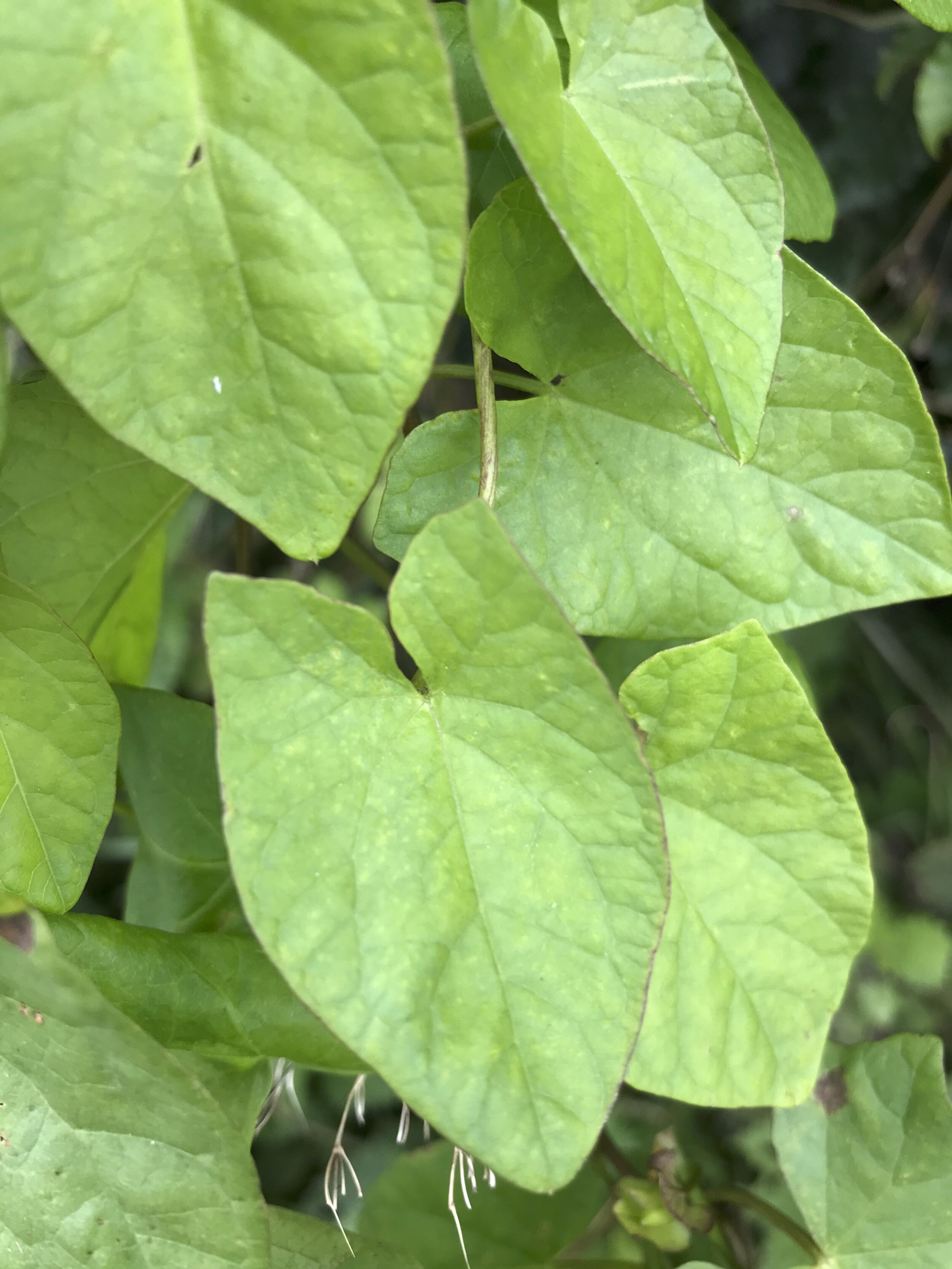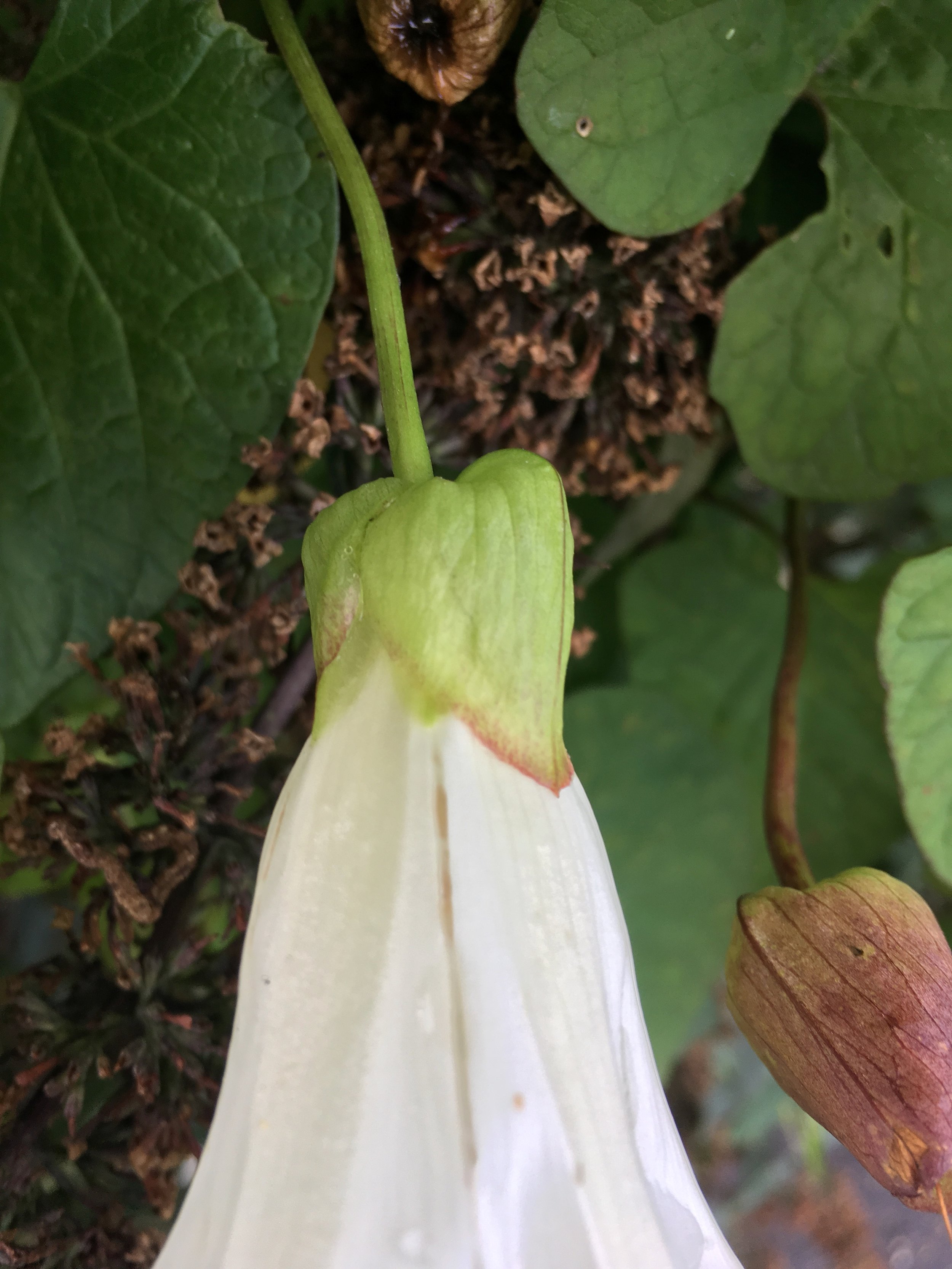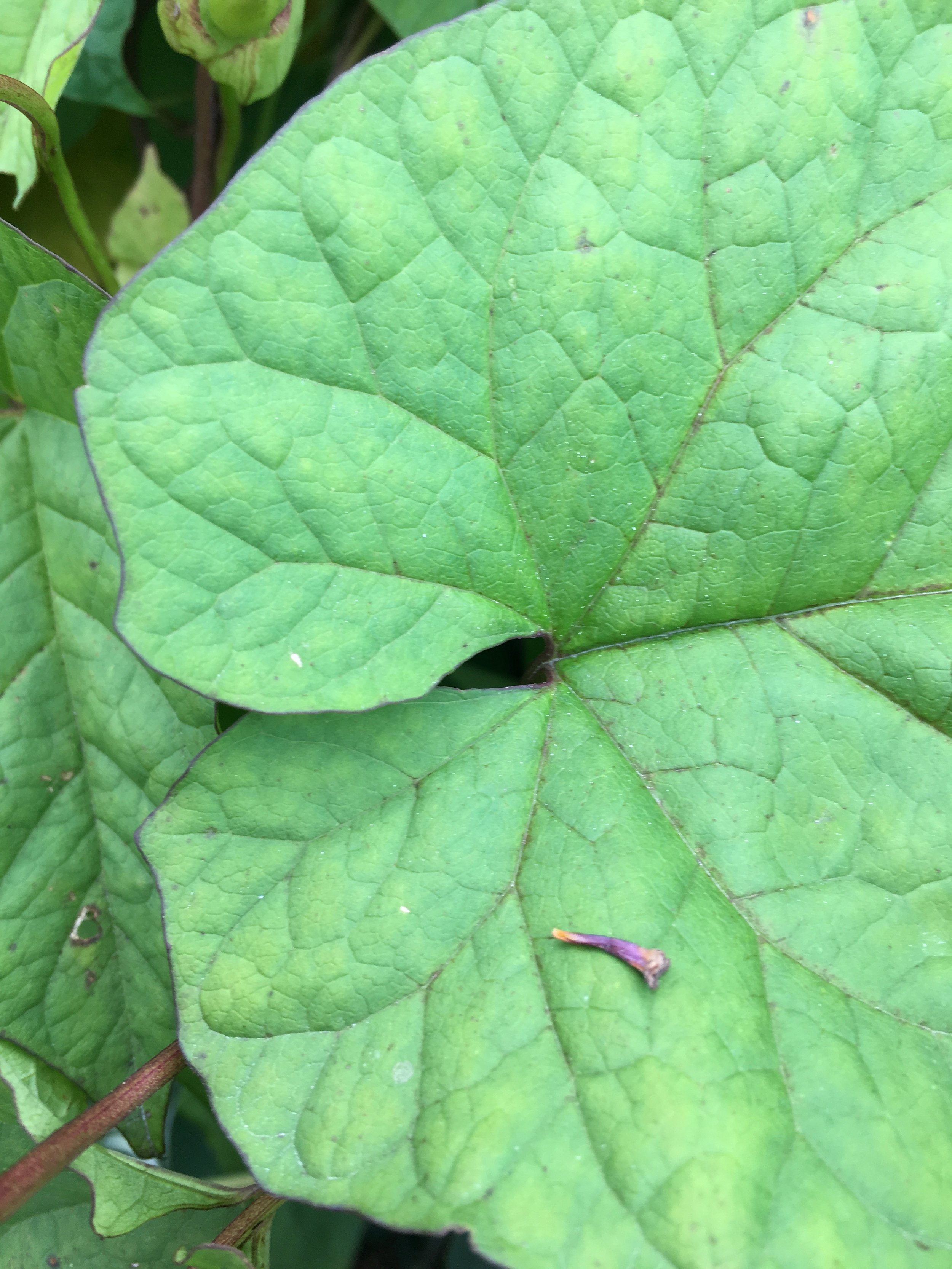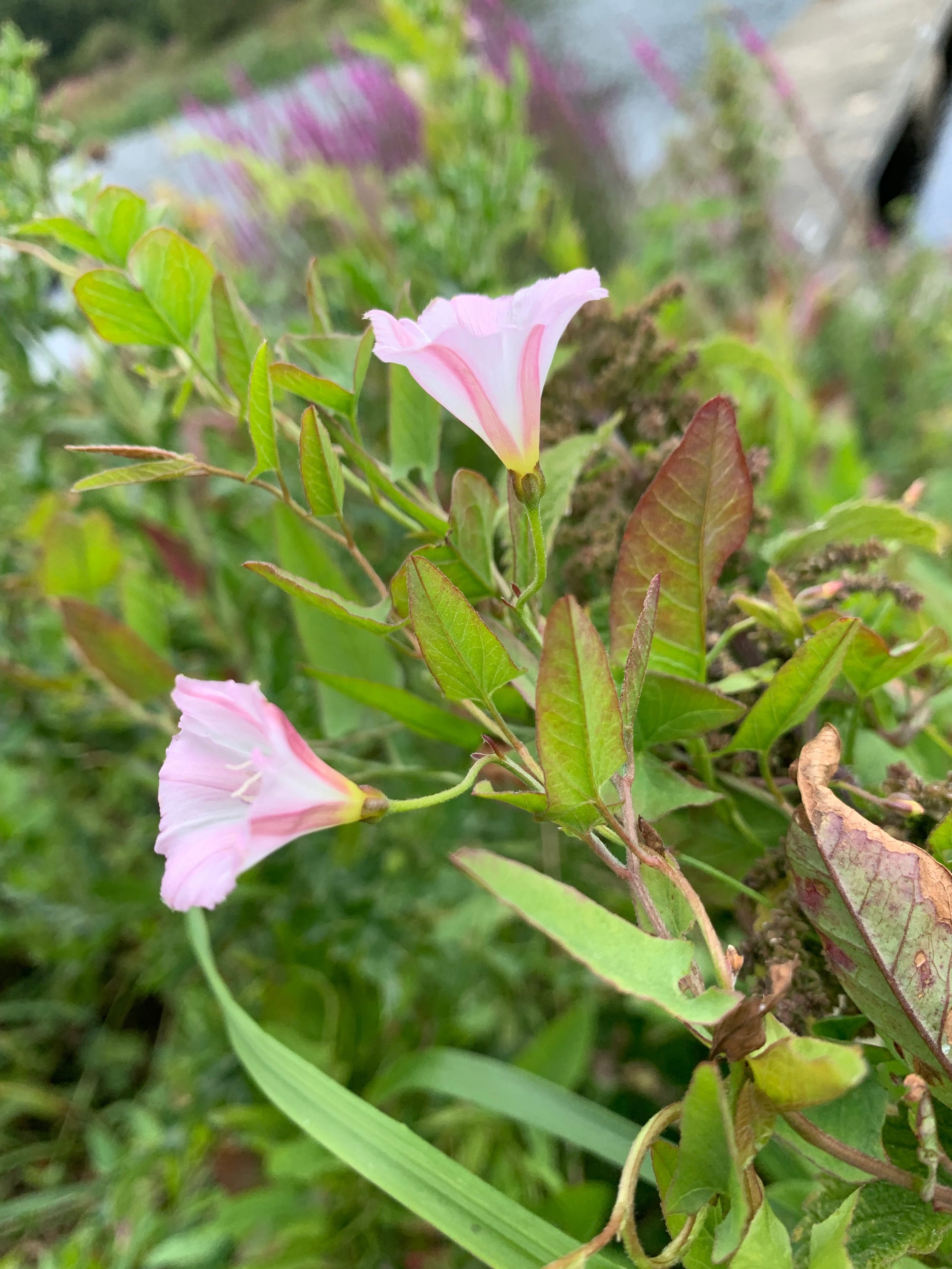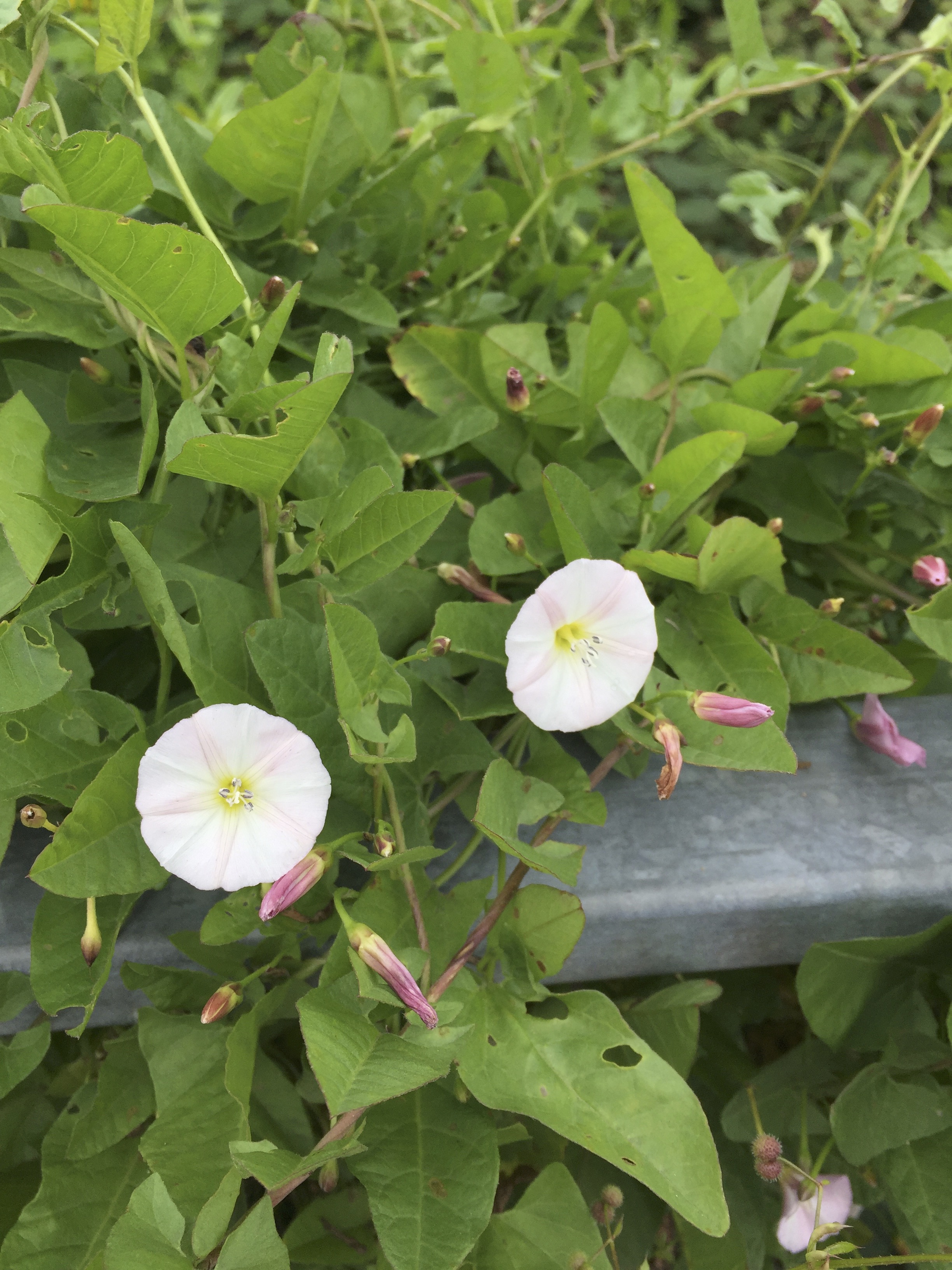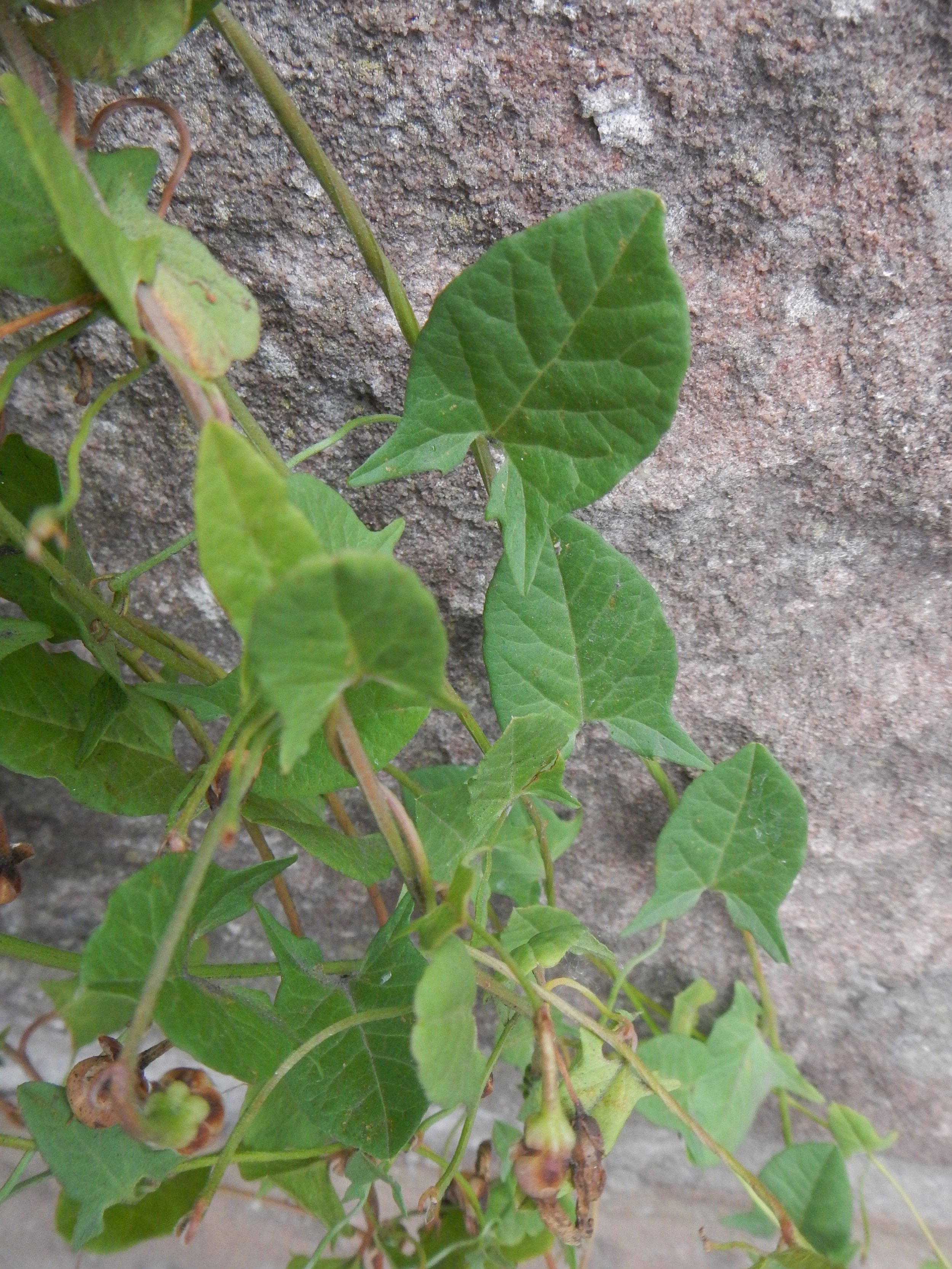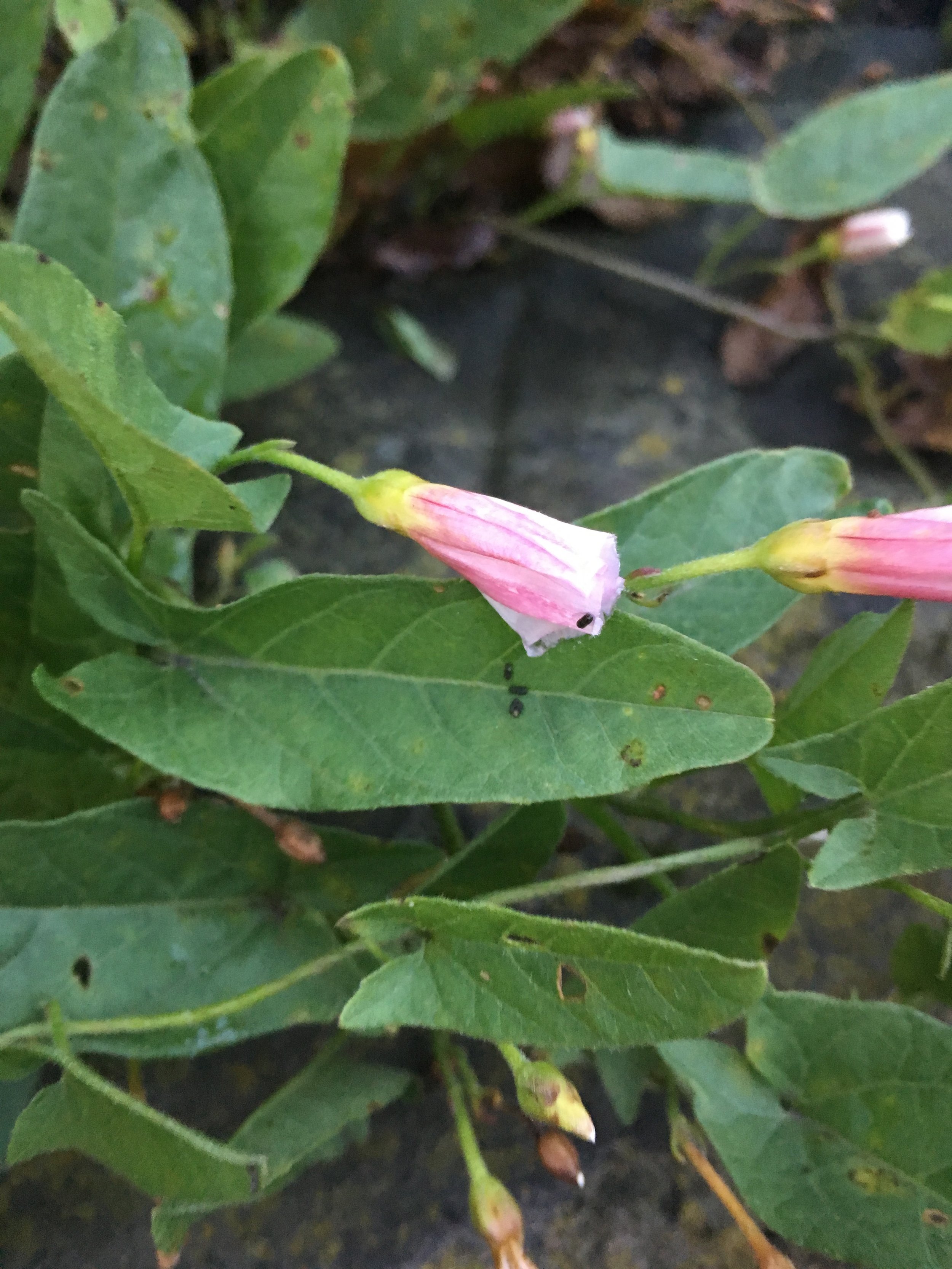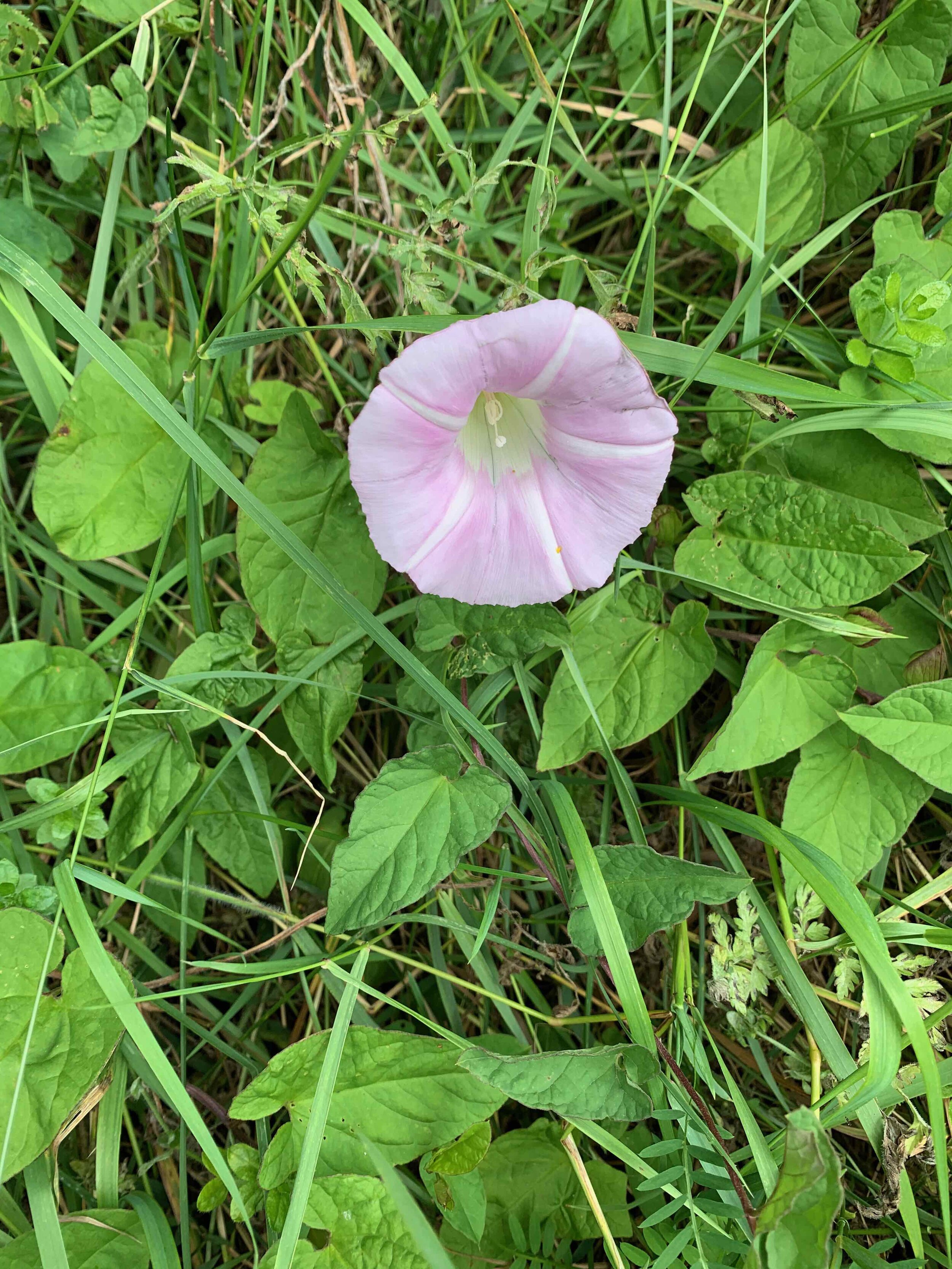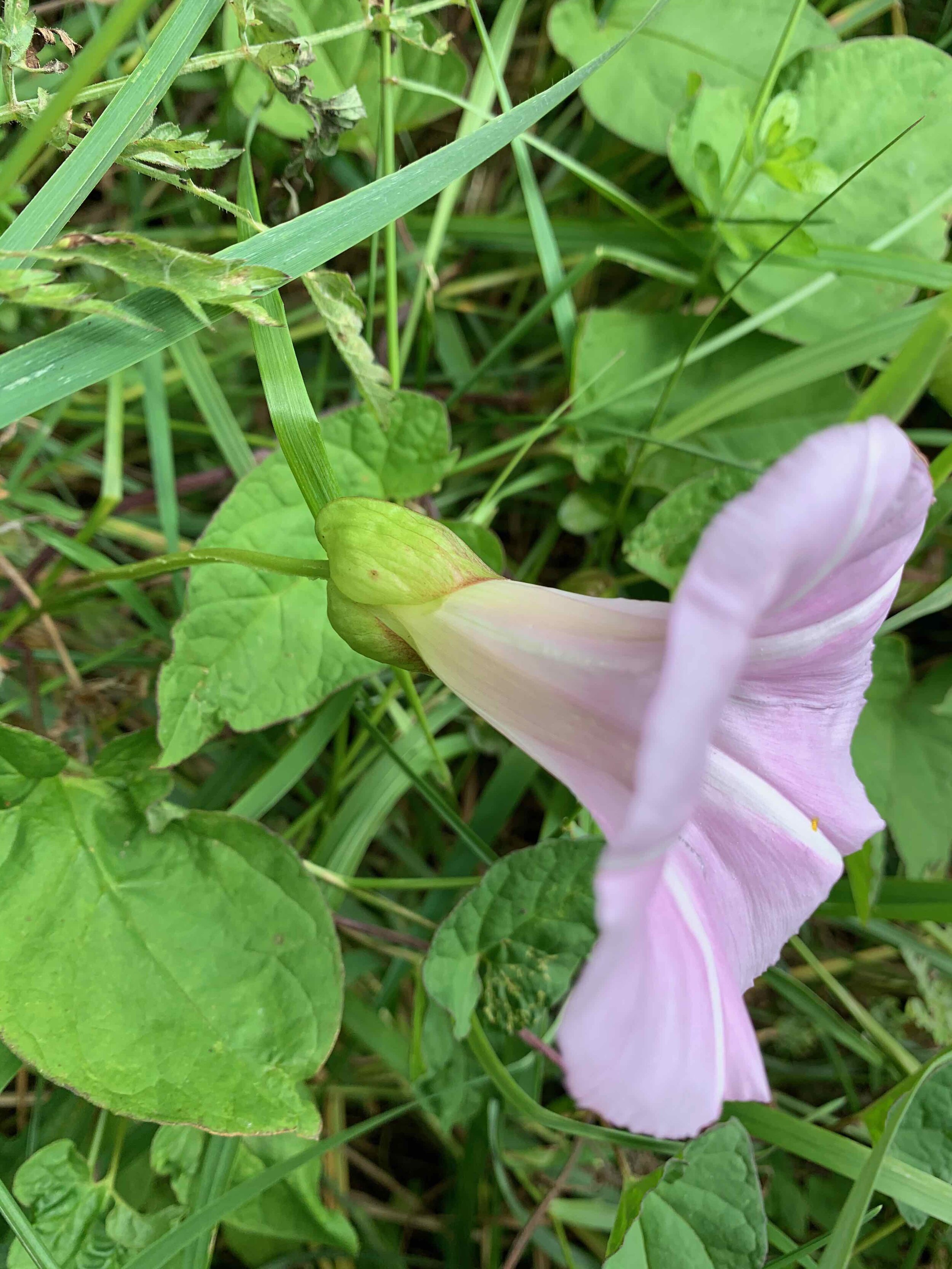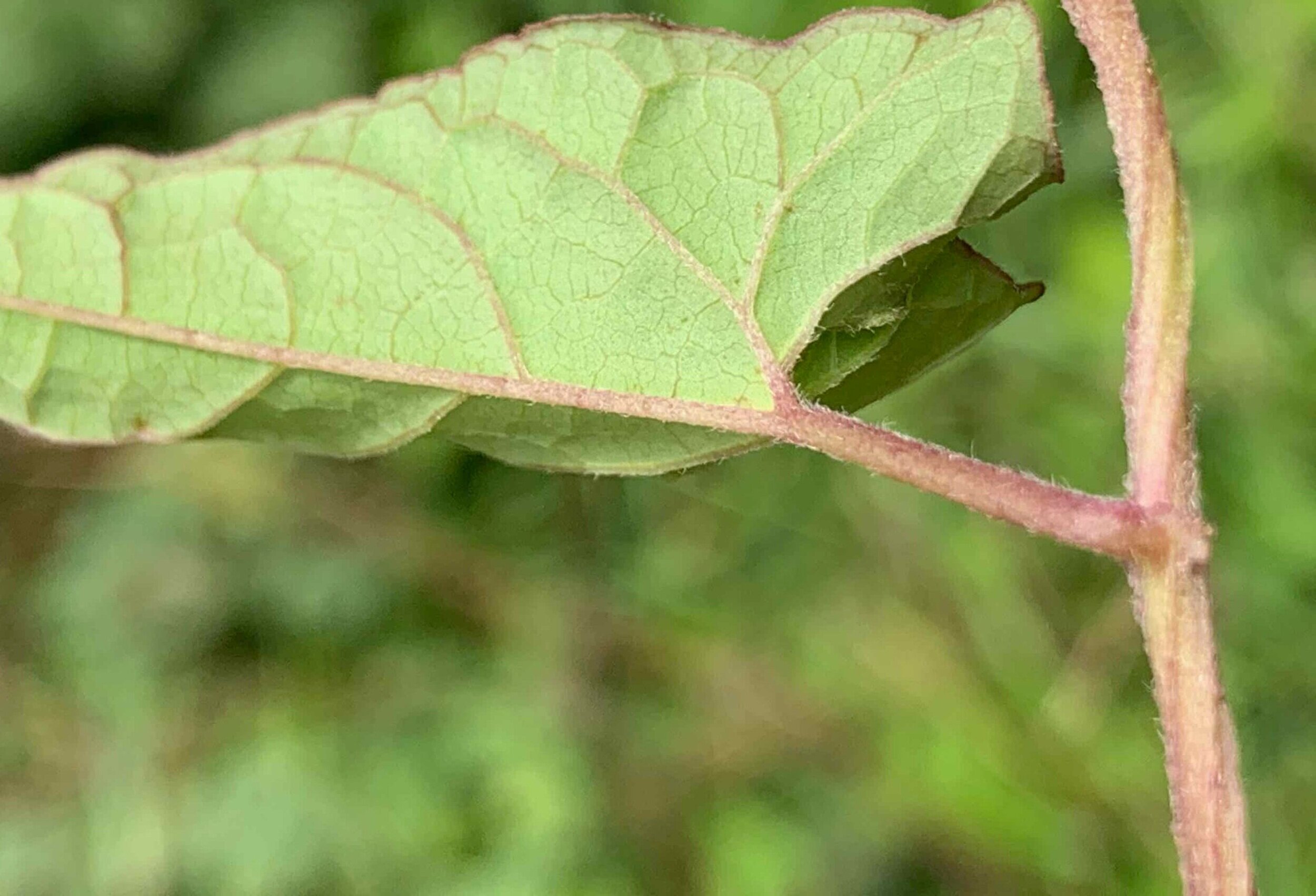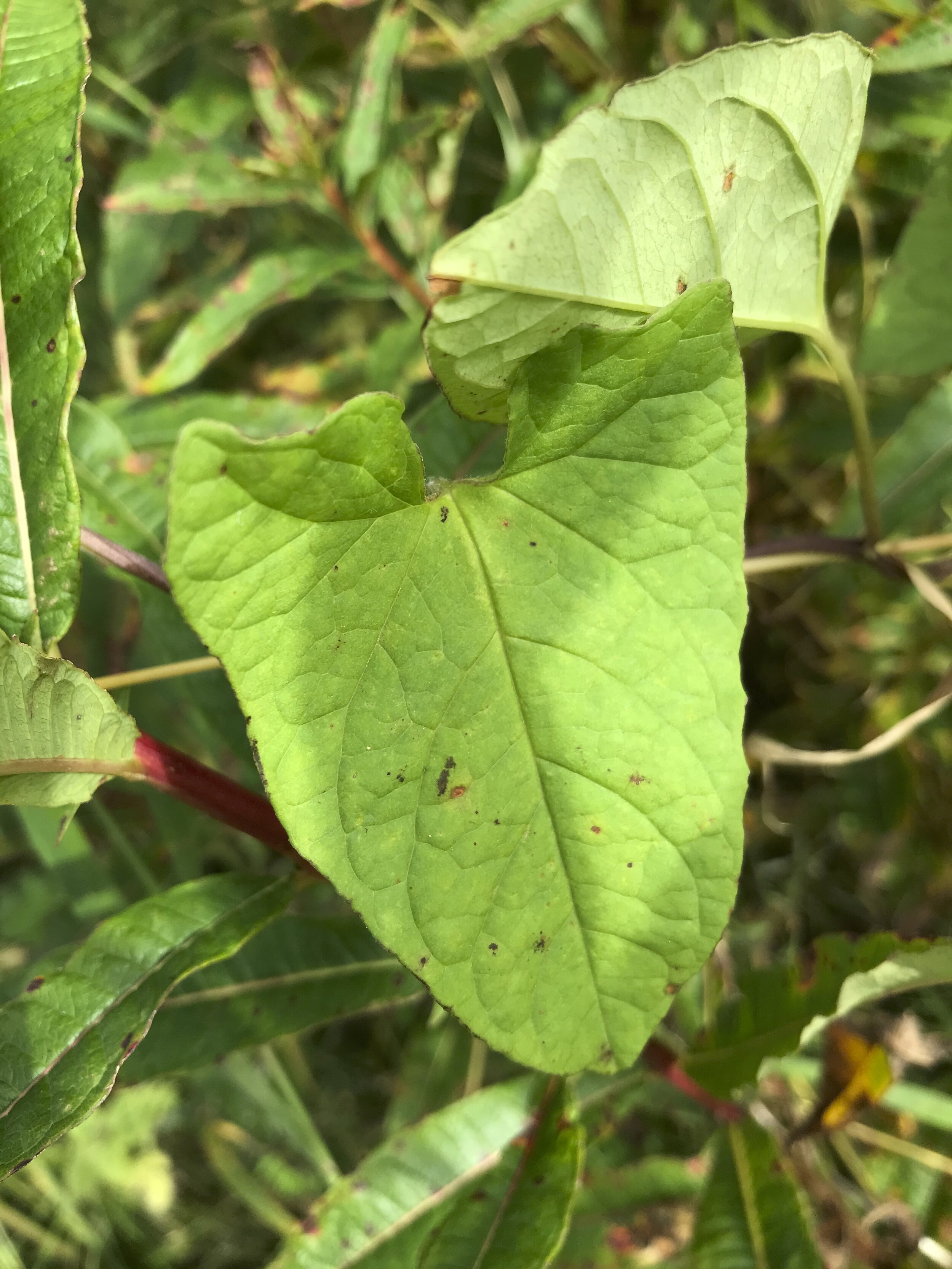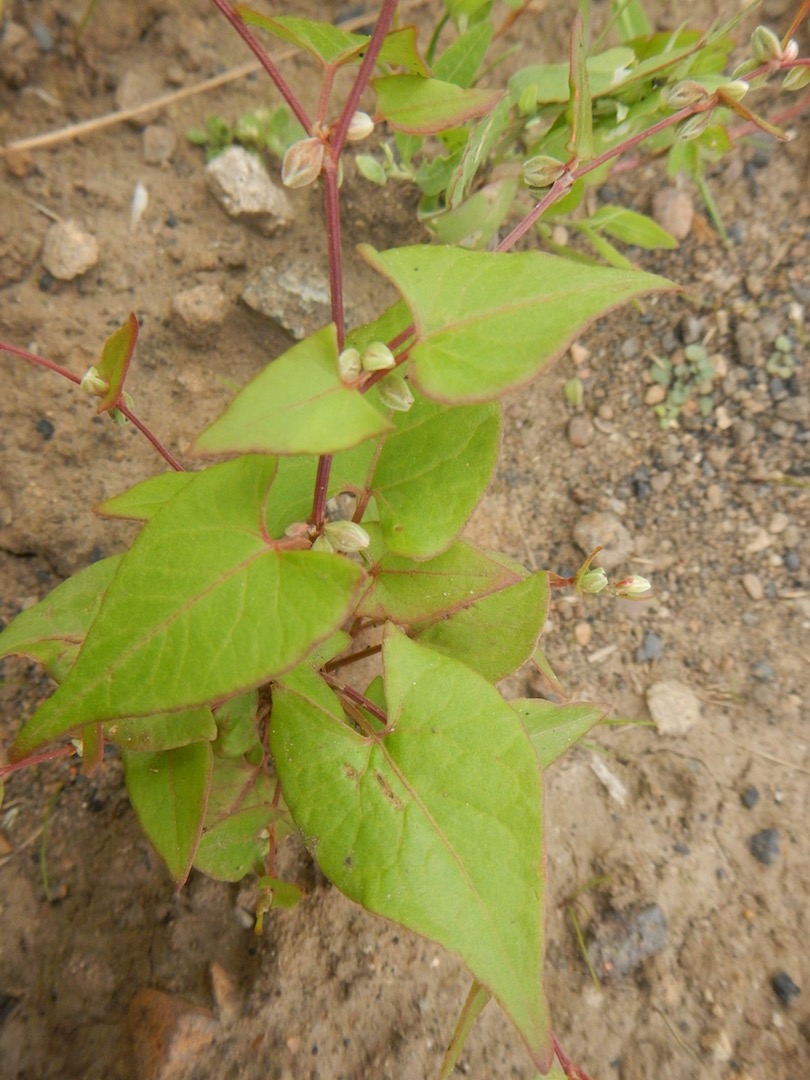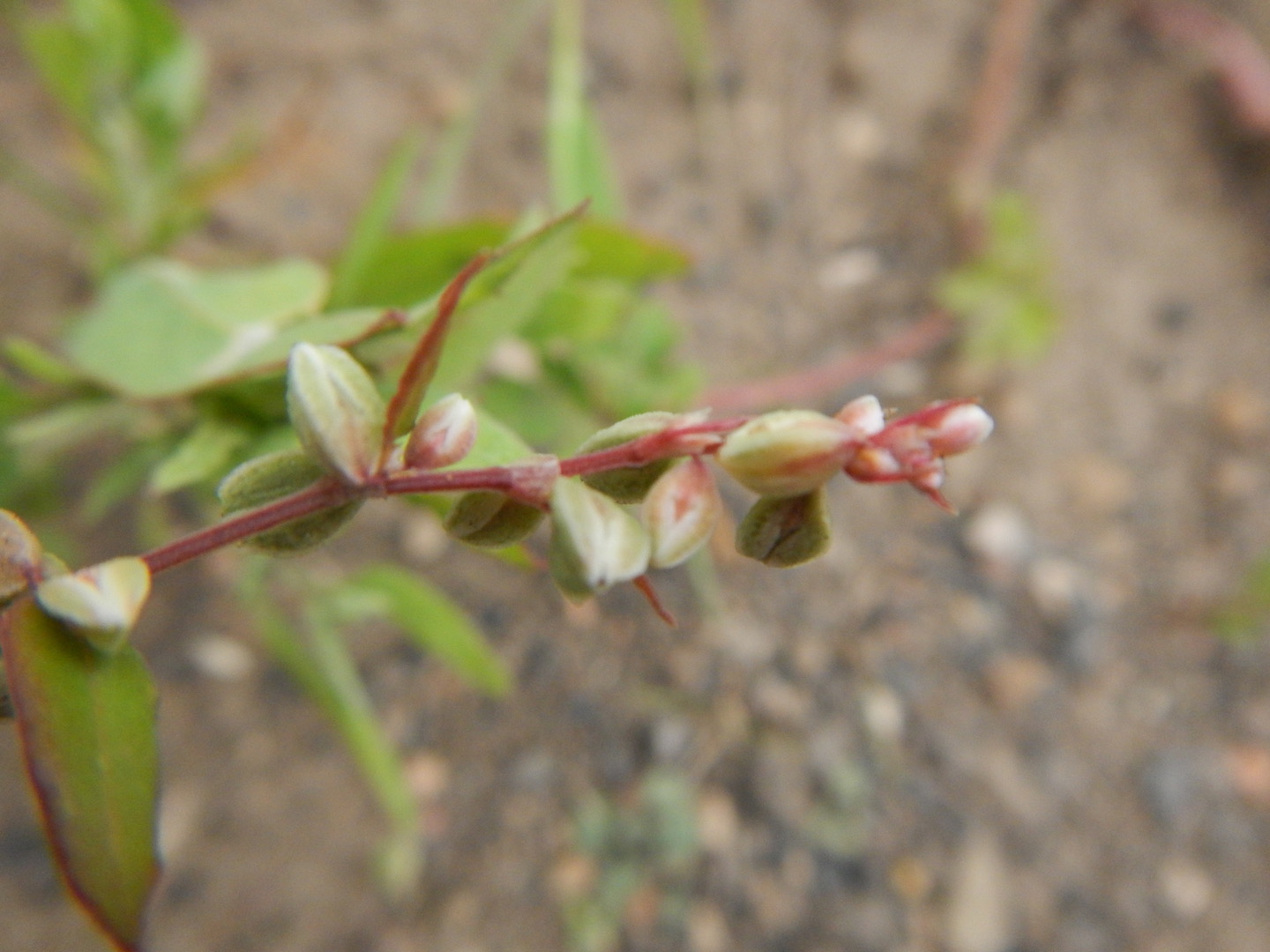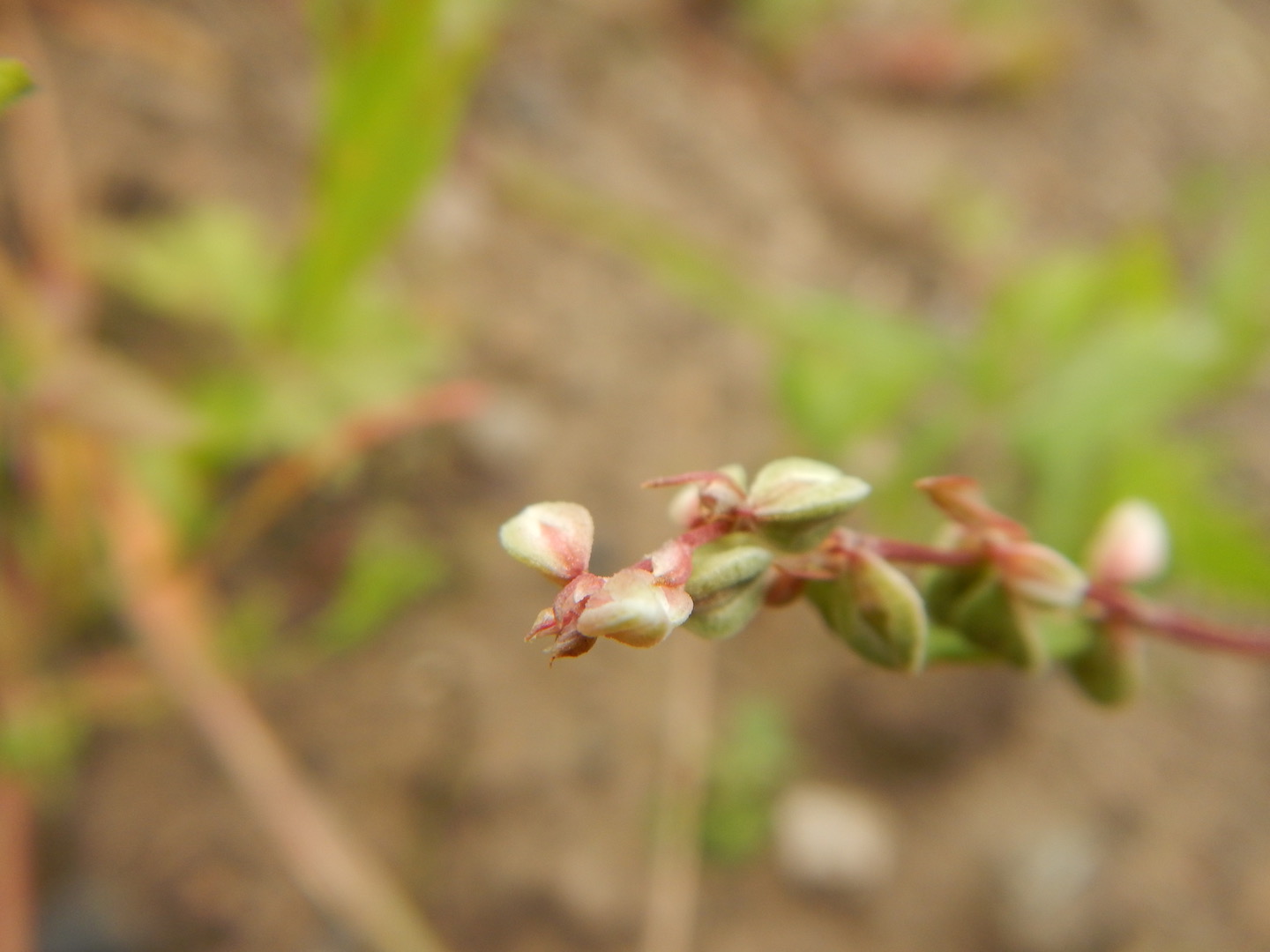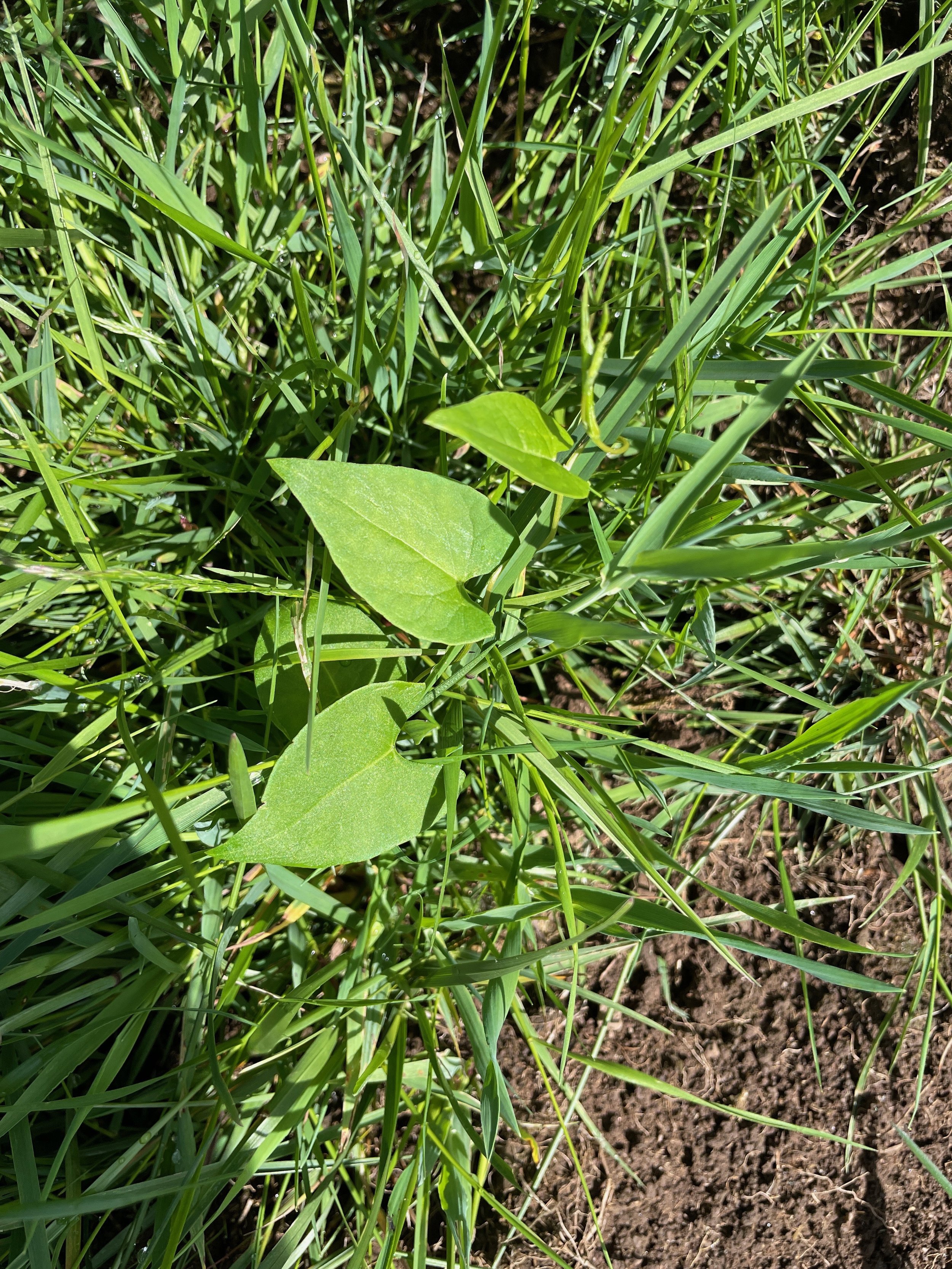Calystegia and Convolvulus species - Bindweeds
Calystegia sepium and Calystegia silvatica are both common species.
Calystegia sepium Hedge Bindweed is common in waste places and scrubby areas, generally not far from buildings.
Climbs by twining its stems anti-clockwise round other plants, posts.
Calystegia silvatica Greater Bindweed is larger with a flower diameter c 6-9 cm. The sepals completely concealed by two overlapping and much inflated bracts. Flowers white, with or without pink stripes on the outside.
Bracts are about as broad as long and the stamens are thickly gland-hairy in the lower half and c 3-3.5 mm wide near the base.
The leaves can be differentiated by the arrangement of leaf veins near the apex of the sinus - see the first picture in the Calystegia silvatica pictures.
Calystegia pulchra - Hairy bindweed
This is the only one that has shortly-hairy stems and petioles - at least when young. The basal sinus on the leaves is the most square-shaped.
Convolvulus arvensis - Field Bindweed
This is a similar plant and usually has pink in the flowers. There are two narrow bracts below the flower and the sepals do not overlap.
Fallopia convolvulus - Black Bindweed
While the leaves have a passing similarity to the other Bindweeds, the flowers are completely different.
Leaves could be confused with Calystegia sepium, Hedge Bindweed, but Fallopia convolvulus are mealy below. This belongs to a different family and is dealt with here.
There is a good account of the Bindweeds in Lothian by David Merrick here.


